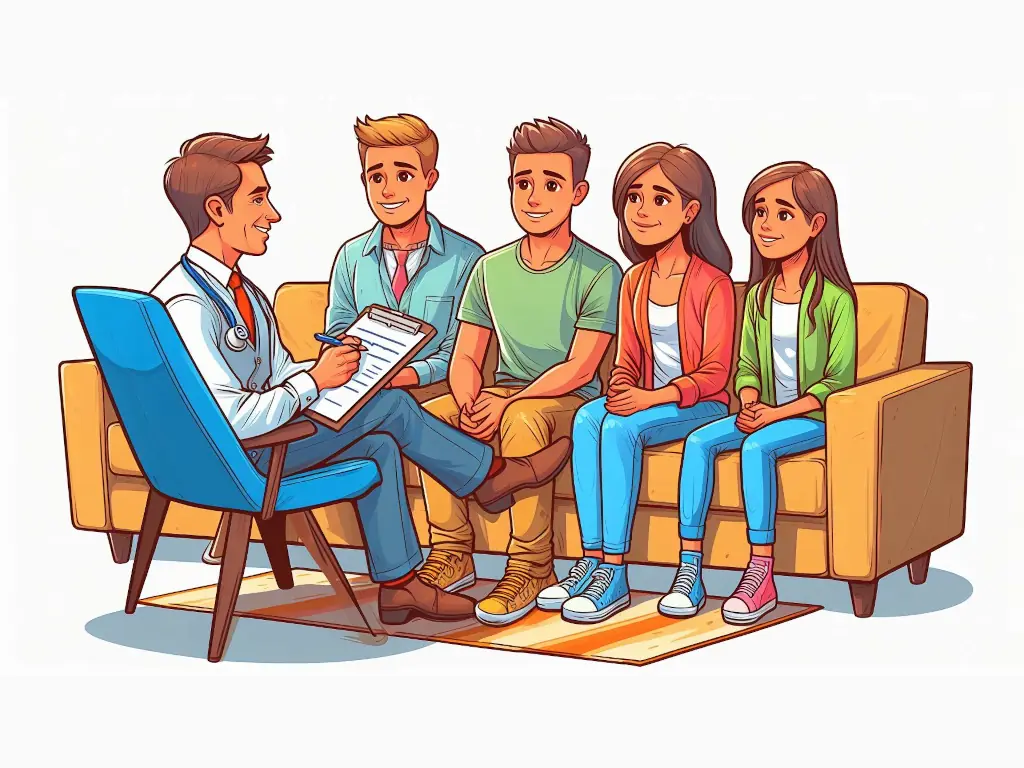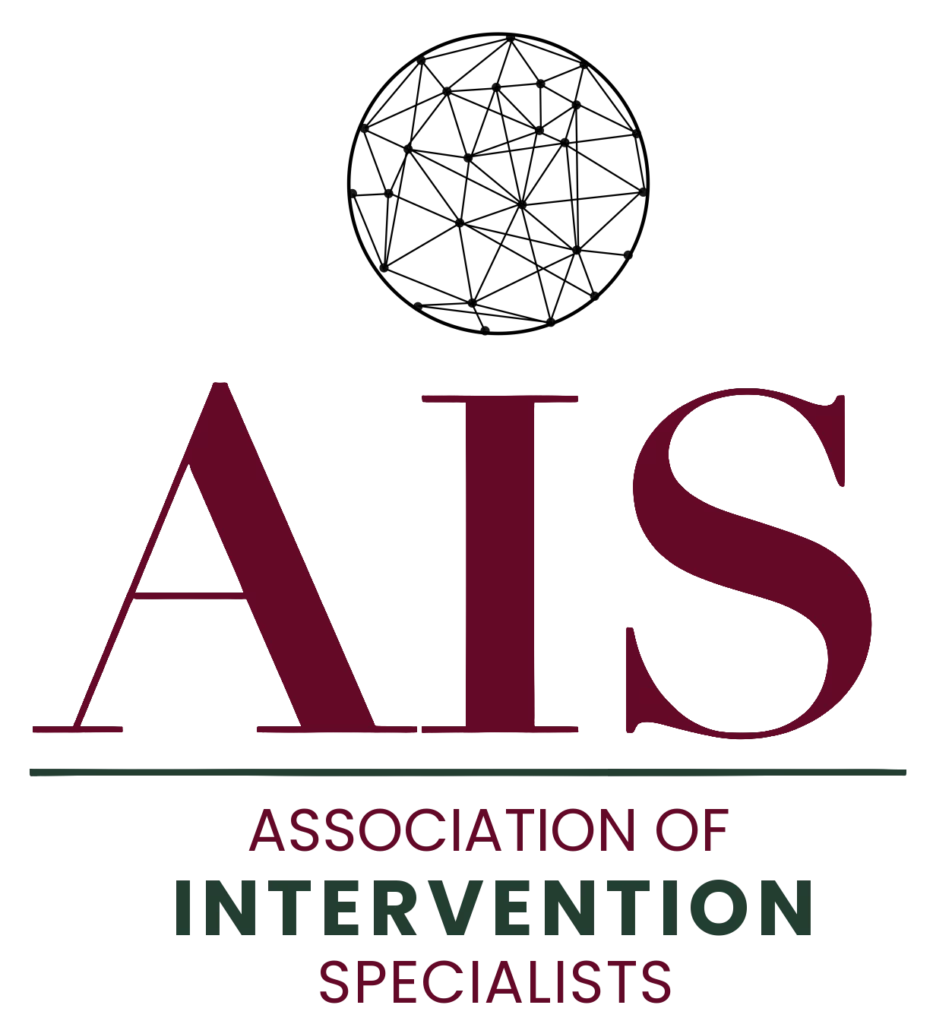What is the family systemic model when used in intervention, and how can it transform the way we approach addiction within families? This model operates on a fundamental principle: the family is a system, and each member’s actions reverberate throughout this system. By engaging not just the person with an addiction but the entire family in treatment, the model offers a comprehensive method for addressing how family dynamics can contribute to and help solve substance abuse issues. This article unpacks how the family systemic approach works, its key components, and the benefits it holds for everyone involved.
Article Overview
- The Systemic Family Intervention Model involves the entire family in the treatment of addiction, acknowledging the entire family unit and the complex family relations and dynamics and focusing on open communication, accountability, support, education, and early involvement of the addict.
- Challenges in implementing the Family Systemic Model of intervention include resistance from family members, balancing individual needs with family interactions, and financial and logistical barriers that may limit access to intergenerational family therapy.
- Ongoing support and treatment are vital for the success of the Family Systemic intervention, involving a range of family systems therapists, structural family therapy, communication patterns, and techniques requiring a long-term commitment from the whole family to support the family processes needed during the addict’s recovery.
The Family Systemic Model: An Overview
Rooted in the belief that families are interconnected emotional units, the Family Systemic Model, based on family systems theory, offers a unique approach to addiction treatment. Family systems theory suggests that unlike traditional methods that focus solely on the addict, this model involves the entire family in the healing and societal emotional process. It acknowledges the complexities within families, understanding that each member of the family influences the others. Thus, these interactions become central to addressing addiction effectively in the systemic family intervention model.
The Family Systemic Model is adaptable, catering to families with members at varying stages of mental health, addiction and recovery. It addresses prevalent issues like codependency and creates empathy among family members. Within this model, the inclusion of the addict from the onset of intervention is crucial. It allows for a holistic approach that accounts for family structure, family conflict, and interactions and influences (family projection process) each has on one another in current and potentially future relationships.
This comprehensive approach, paired with its focus on how the family functions, makes the Family Systemic Model a powerful tool in the fight against addiction.
Family Interventions
Central to the Family Systemic Model are five key components that work together to facilitate healing:
- Open communication: vital in reducing tension and addressing issues openly.
- Accountability: holding each family member responsible for their actions and behaviors.
- Supportive family environment: providing a network of support and understanding for the addict and other family members.
- Education: learning about addiction, its effects, and how to support recovery.
- Early involvement of the addict: including the addict in the family systems therapy process from the beginning.
These components work together to create an environment of trust, understanding, and healing within the nuclear family emotional process.
Accountability is the next pillar, which entails taking responsibility for one’s behavior and shifting it back to the individual members who have substance use disorders, mental health issues or eating disorders. This redirection is paired with support from the family, which strengthens parental expectations and can help members of the family understand addiction, key concepts of communication styles, and how the family operates in regards to family member roles. Education involves understanding the underlying causes of addiction, the roles family members and sibling relationships play within the system, and the dynamics of emotional interactions and relationship problems that perpetuate the cycle of addiction.
Finally, involving the addict early on in the intervention process is critical. It creates a collaborative and respectful environment that encourages unified problem-solving, addresses parent child conflict, and allows for one or more children to express themselves healing emotional systems.
Benefits for Addicts and Families
The benefits of the Family Systemic Model extend beyond the addict to encompass the entire family. On one hand, it enhances family relationships by enabling families to explore their roles and potentially switch them to establish a healthier family system. On the other hand, it builds communication skills crucial for improving relationships.
Family systems therapy focuses on addressing issues of codependency, enabling the nurturing of healthier relationships, and helps families understand the impact of addiction on their relationships, promoting healing and reconciliation. Establishing boundaries and support plays a pivotal role in the recovery process, ultimately improving chances of long-term recovery for individuals struggling with addiction. This is why family systems therapy works.
The comprehensive approach of addressing the family unit as a whole through the Family Systemic Model substantially increases the likelihood of successful treatment outcomes. Additionally, engagement in family systems therapy contributes to stigma reduction by framing addiction within a broader family and systemic context, thus contributing to the development of healthier dynamics.
Implementing a Family Systemic Intervention
Implementing a systemic family intervention model is a multistep process that requires careful planning and preparation, active involvement of the addict, and ongoing support and treatment.
Understanding each phase of the intervention can help families navigate the journey and provide the necessary support to the addict.
Initial Planning and Preparation
The initial phase of a Family Systemic Intervention lays the groundwork for the entire process. It entails organizing the family for the intervention process and preparing them for what lies ahead. Families can obtain referrals to qualified intervention specialists from local substance use disorder professionals. These professionals aid families in organizing the intervention and conducting a comprehensive family assessment. This assessment includes activities like creating a three-generation genogram, analyzing family life cycles, evaluating problem-solving mechanisms, and constructing a structural map of the family history.
A crucial part of the initial planning is the creation of a formal contract. This contract defines the roles and responsibilities of the therapist and family members, setting clear boundaries and expectations for the intervention.
The intervention begins with an intake session that helps the specialist understand the family’s view of their issues and assess the family’s readiness and appropriateness for family therapy. Additionally, logistical arrangements, including timely appointments, session logistics, and managing cancellations, are essential aspects of planning for the intervention sessions.
Involving the Addict
The Family Systemic Model emphasizes the importance of involving the addict from the beginning of the intervention process. This inclusion is crucial to accurately assess the family’s perception of the problem and to establish motivation for undergoing family intervention. An intervention specialist facilitates collaborative communication by inviting the addict to express their viewpoint during the intervention, making the process more inclusive.
It is also recommended that all key family members, including at least one family member, are included in the intervention sessions. This ensures that important dynamics are not overlooked and creates open discussions about the individual’s impact on each family member’s life. This controlled, two-way conversation allows for a more comprehensive understanding of the issue at hand.
Ongoing Support and Treatment
The journey to recovery is ongoing, and it requires continuous support and treatment. A range of therapeutic techniques and behavioral therapies is vital in ongoing support. These include:
- Family Behavior Therapy
- Multidimensional Family Therapy
- Behavioral Couples Therapy
- Community Reinforcement and Family Training
- Functional Family Therapy
Ongoing support includes:
- Engaging family members in collaborative efforts with healthcare teams to promote adaptation to illness, communication, lifestyle changes, and proactive goal setting
- Reviewing and reinforcing newly established therapeutic patterns and goals to prevent the relapse of old behaviors
- Multiple meetings over months to rebuild trust and family relationships
Successful interventions often involve these ongoing support strategies.
Psychoeducation serves as a key part of ongoing treatment, providing the following benefits:
- Helping family members develop problem-solving and communication skills
- Providing information about the condition and treatment options
- Promoting engagement in the treatment process

Challenges and Considerations in Family Systemic Interventions
While the Family Systemic Model offers a comprehensive approach to addiction treatment, it also presents unique challenges and considerations. From resistance from family members to balancing individual needs and unique circumstances, and to financial and logistical concerns, these potential obstacles should not be overlooked.
Understanding these challenges allows for the development of proactive strategies to address them effectively.
Resistance from Family Members
One of the major challenges in implementing systemic family therapy is resistance from family members. They might perceive that blame is being unfairly allocated, or view the identified patient as the sole source of their problems. Therapists often encounter this resistance, which can disrupt therapy sessions.
Recognizing that resistance is a normal part of therapy can help normalize the process for family members. Acknowledging their hesitations can serve as a springboard for meaningful participation. Interventions that encourage members to veer away from their usual patterns and articulate their goals for therapy can create a collaborative atmosphere and reduce resistance.
To minimize resistance, therapists must avoid overtaking the therapy sessions, which can lead to disengagement and silence from the family.
Balancing Individual Needs and Family Dynamics
Another consideration is the balance between individual needs and family dynamics. Therapists should evaluate the needs of individual family members while ensuring the entire family is involved in the therapeutic process. This prevents the perpetuation of the belief that the problem resides with only the index patient.
Therapy, especially when conducted by a skilled family therapist, can significantly improve family dynamics by enhancing communication, aiding in conflict resolution, and helping family members understand and adapt their roles and behaviors. Identifying and addressing the roles of family members, such as caregivers or mediators, is pivotal in therapy to prevent rigid dynamics that can cause imbalances and conflicts.
Financial and Logistical Concerns
Financial and logistical concerns can limit access to therapy for some families. Economic constraints can restrict access to therapy for lower-income families, with therapy being more accessible to those in middle and upper classes. Financial barriers are particularly pronounced for families affected by incarceration, where limited employment and educational opportunities upon release can hinder access to family therapy.
Geographical distance and limited transportation can be significant obstacles for families seeking to participate in therapy sessions. For some families, the long-term commitment required by certain therapeutic approaches may not be affordable or manageable. Securing private space for online therapy can be a logistical issue, especially for those residing in transitional living environments.
When families struggle with basic survival needs, such as securing housing and employment, prioritizing mental health therapy can be challenging from both a financial and logistical standpoint.

Tips for Families Considering a Family Systemic Intervention
For families considering a Family Systemic Intervention, it’s essential to approach the process with preparation and understanding. The following sections offer practical tips to help families navigate this journey, guiding them to find the right intervention specialist, set realistic expectations, and commit to long-term support.
Finding the Right Intervention Specialist
Choosing the right intervention specialist is a crucial step in the process. Families should seek a specialist with:
- A track record and experience in hosting and running interventions
- Certification as an intervention professional
- Prior experiences and strategies for handling various scenarios during an intervention
It’s important to thoroughly research and inquire about these qualifications when selecting an intervention specialist.
To ensure a good fit, families can interview the intervention specialist to assess their communication style and alignment with the family’s needs. The Association of Intervention Specialists is a resource where families can find qualified intervention specialists that service their area. This careful selection process ensures that the intervention specialist will be a supportive guide throughout the intervention process.
Setting Realistic Expectations
Setting realistic expectations is vital for families embarking on a Family Systemic Intervention. Understanding that recovery is a long-term process and immediate change is not guaranteed can help manage expectations and prevent potential disappointments.
It’s important to accept that the individual struggling with addiction may not respond positively to the intervention immediately. Families should be aware that recovery is an ongoing process and the intervention is just the beginning of a longer journey. Success should be measured in small steps and progress rather than an immediate and complete transformation.
Committing to Long-Term Support
Sustaining recovery requires long-term support from family members. Offering a trusted network for communication during times of stress, long-term family support helps prevent relapse.
A strong family system supports recovery by providing resources for a healthy lifestyle, including diet, sleep, and expressing emotions. Family support acts as a safeguard against temptations to return to substance use when confronted with life’s challenges. This continued commitment to support is crucial to ensure the addict’s sustained recovery.
Regular Intervention Vs Family Systemic Model
There are five basic points of a Family Systemic Model, which takes a regular intervention and gives a twist, focusing on the entire family along with the addict. A normal intervention has five points that basically describe what goes on. These five points include:
- All meetings prior to the intervention only involve the family members. The addict is not told about the intervention.
- The intervention occurs only once – this is strictly for effectiveness.
- An Intervention occurs in a controlled environment that includes a trained counselor.
- Once the intervention occurs, daily life must go on.
- An addict must choose whether or not they enter into rehab. Whether they agree to it or not, the family must stick firm to the consequences that were outlined during the Intervention.
A Family Systemic Model Intervention is completely different. The following points listed below show how a family systemic model is outlined as well as how it differs from a normal intervention.
- There are no planned meetings that are hidden from the addict. In fact, when a meeting is set up with a trained interventionist the addict goes to the very first one.
- During the meetings, all family members and the addict openly discuss the way the addict’s behavior has impacted each one’s lives. It is not a one way conversation – it can go back in forth in a controlled manner.
- Instead of having one big meeting for the intervention, there could be several meetings a week and the process can last months at a time.
- Both the addict and family members commit to entering some type of counseling. Most likely, the addict will attend an inpatient rehab to get over the addiction. Afterward, the addict will join the family therapy sessions that occur while he/she is in rehab. The family commits to therapy sessions while the addict is in rehab as well as afterward as one family unit.
Summary
To sum it up, the Family Systemic Model offers a comprehensive approach to addiction treatment that involves the entire family in the healing process. From understanding key components and benefits to implementing the model, navigating challenges, and hearing success stories, we’ve explored the transformative power of this model. While embarking on a Family Systemic Intervention requires careful planning, the right specialist, and long-term commitment, the potential benefits are profound. By creating healthier relationships, enhancing communication, and providing continuous support, families can navigate the path to recovery together. Remember, you’re not alone in this journey – and with the right support and tools, healing is possible.
Author: Dr. Jerry Law, D.Min., MDAAC, BRI-II, CIP
Frequently Asked Questions
A family system intervention is a form of psychotherapy that helps individuals resolve their problems within the context of their family units, where many problems often originate. It aims to improve outcomes for the person with the disorder or illness and enhance the well-being of the caregiver.
Systemic therapy in family therapy emphasizes the interconnectedness of an individual’s personal relationships, behaviors, and life choices with the issues they face, focusing on relationships between a group of people rather than solely on an individual’s thoughts and feelings. This approach is used in family, couples, and group therapy.
A systemic intervention example is helping family members dealing with alcohol or drug abuse. This type of intervention focuses on the entire family system rather than just the individual.
Systemic family practice involves facilitating discussions among family members to improve understanding, find solutions to problems, set goals, and collaborate with a practitioner to work together and support each other. This practice enables family members to express and explore difficult thoughts and emotions safely.
The family systems model, according to Bowen, is a system in which each member has a role and is expected to respond to others in a certain way based on their role and relationship agreements. This model emphasizes the interactions between family members and the context in which the family is situated.

